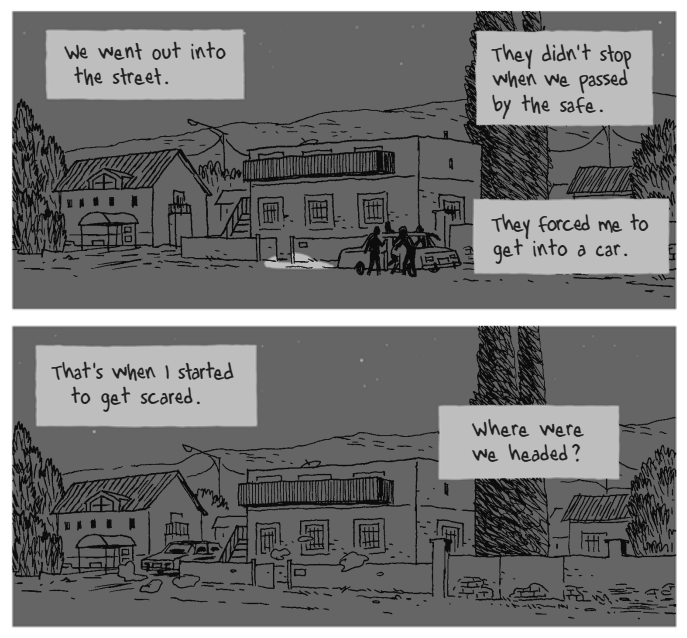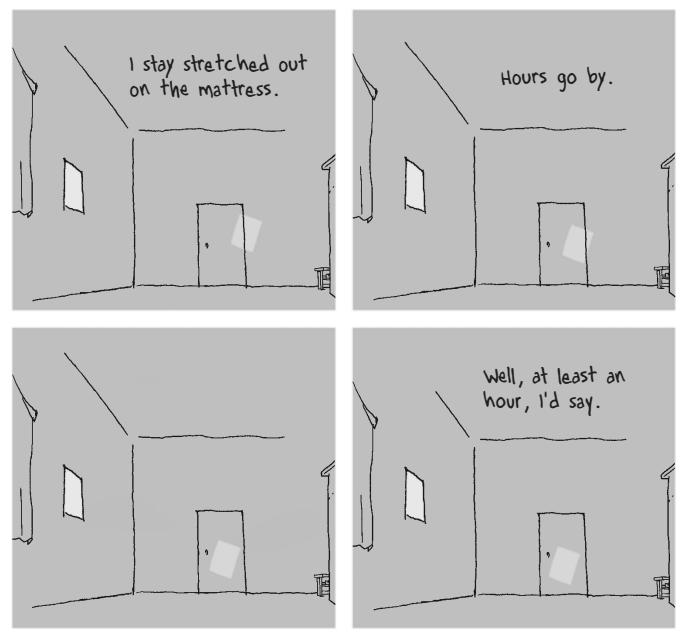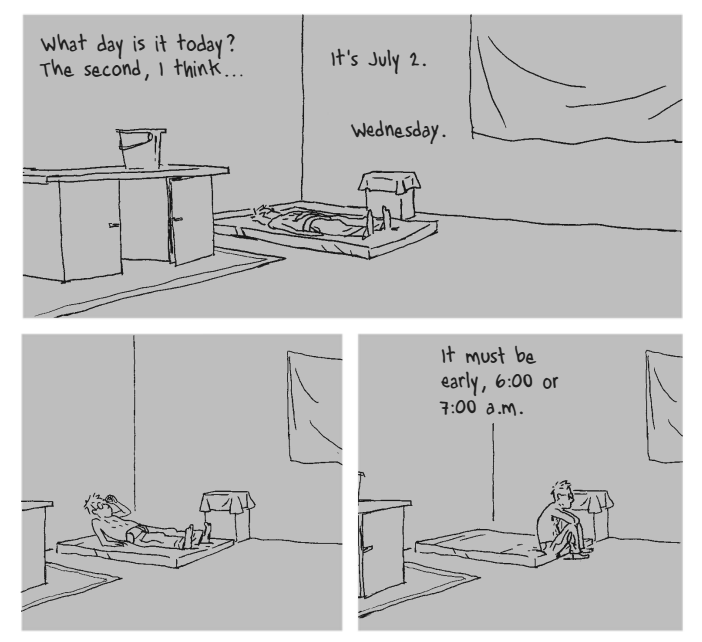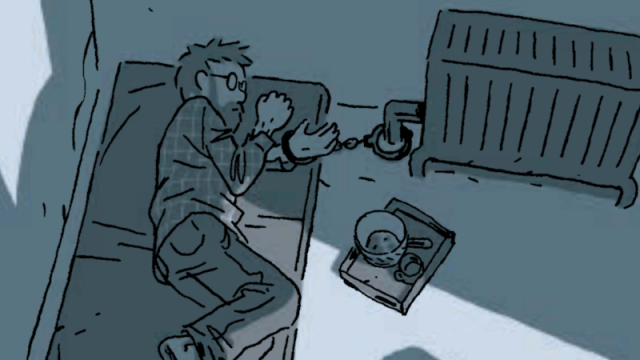In 1997, Christophe André was kidnapped while serving with Doctors Without Borders in a town near Chechnya. Guy Delisle’s Hostage recounts the three months that André spent in captivity, and proves the idea that all you really need to make a fantastic comic is a captivating story and a sense of style.
Published by Drawn & Quarterly, Hostage opens up like something out of a Liam Neeson movie. Armed men ambush André in the night, hustle him out of his apartment, and shuttle him away to an unknown location far enough away from his surroundings to disorient him. He’s put in a series of bleak, empty rooms, and slowly comes to realise that he’s being held hostage. Day in and day out, André’s sole interactions with his captors are moments he’s allowed to eat watery, disappointing broth and when he’s taken to the bathroom. There are brief instances where he feels as if his captivity will be fleeting but, as Hostage unfolds, we quickly realise that this — a meagre four walls and a boarded up window — is it.

In a way, reading Hostage feels like going through André’s process of realising the situation he’s in. Early on, there are brief glimmers of hope that his loved ones are desperately looking for him and that his captors are negotiating the terms of his release. But slowly, André realises that his captivity won’t be for the short term and gradually, his world view — and Hostage‘s art style — begin to shift.
To be kept in a room is to have one’s world shrunken and shifted into a hyper-focused state. When the only thing you have to keep you company is the radiator you’re latched to, it becomes more than a radiator to you. It’s your captor and the symbol of everything that’s wrong with what’s happening to you. But it’s also your friend, in a weird way. A constant in your life that stays steady regardless of all the confusion that’s invaded your life.

There’s a beauty to Delisle’s approach to telling André’s story that can’t be understated. Though Hostage‘s art and its words are sparse, they speak volumes to the sort of headspace that a person might find themselves in if trapped in a room for a number of weeks. In the decidedly cartoonish style of the comic, you get a sense of how André might have disassociated from his life as a hostage, viewing it more as a peculiar thing that happened to someone else rather than to him.

The book is quick to remind you that everything André goes through — mild starvation, psychological misdirection and utter panic — are very real, but the story is told with the sort of breathlessness that gives you the sense of a person desperately wishing it was all a dream.
In its dark, sombre depictions of life trapped in a room, Hostage reveals a truth that’s bigger than the story it’s telling: Art can be simple and powerful at the same time. Delisle’s style is cartoonish in a way that makes you focus on the words being spoken and the objects being drawn. Rather than hyper-realism, Hostage instead makes you contemplate the tunnel vision that inevitably overcomes a person whose world is suddenly reduced to a couple of square metres.
Hostage is a testament to simple drawing and honest storytelling. It builds a world using minimal colour and words that are carefully chosen to make you feel the hopelessness that André’s grappling with. Because that’s what Hostage is really about: A man snatched from his place in the world and left with little to hold onto in his non-existence. He’s tired and confused and angry, with little understanding of who those emotions should be directed towards.
And yet, in its utter scariness, Hostage manages to make itself into a work of art that tells a deeply personal story. While most of us will never go through what André did, the book conveys his loneliness and how, gradually, his thoughts turn inward. André’s is a story of finding refuge in one’s self as everything around him turns cold and hard. It’s tough and at times disturbing to project yourself into but ultimately, it’s a story more than worth digging into.

Comments